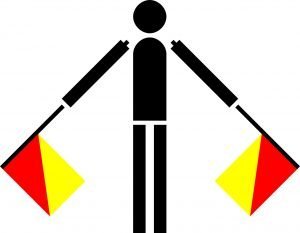The Untold Birth of the Peace Sign ☮
The peace sign has been a universal symbol used in activism for decades, but would you believe it was birthed from an anti-nuclear weapons protest?
The peace symbol is one of few universally recognizable signs, thanks in part to its meaning, and in part to its simple design. The symbol has been in use since the 20th century, and continues to find many applications to date, especially in the realm of activism.
That being said, did you know the peace sign was created at the height of a nuclear disarmament campaign?
Peace Sign and Semaphore Lettering
After witnessing the devastating effects of nuclear weapons in World War II, activists formed an organization called the Campaign for Nuclear Disarmament (CND). The organization was based in the United Kingdom and aimed at preventing the testing, spreading and use of nuclear weapons. It intended to achieve this through mass education along with holding protests.
In 1958, the organization had planned a 50-mile march from London’s Trafalgar Square to Aldermaston, where the nation’s nuclear arsenal was located. For this march, they needed an “immediately recognizable symbol” that would help in identifying them and their fight. Gerald Holton, a young British graphic artist, was tasked with coming up with the symbol.
Holton would combine the semaphore signals for the letters “N” and “D” representing the words “nuclear” and “disarmament.” The semaphore letter “N” is depicted by a person holding two flags in the shape of an inverted “V”. The letter D is depicted by a person holding two flags, with one straight up and the other straight down. Holton superimposed the two signs and put a circle around them to come up with the final design.

Semaphore D

Semaphore N
On presentation to the CND, Holton says the design was immediately accepted and adopted as the group’s nuclear disarmament symbol, not only for that planned march, but for all other CND events to come.
The symbol quickly became successful in its worldwide recognition as “the peace sign,” peace symbol, CND symbol, nuclear disarmament symbol, and more. The deliberate decision by the CND to not copyright the design also made it more successful, as other anti-war movements across the world adopted it and customized it to their delight.
The Peace Sign in the US
The peace sign crossed the ocean and landed in the United States, where it continued to grow in popularity. Albert Bigelow, an American pacifist, made it popular in the U.S. after sailing a small boat fitted with the symbol into the vicinity of a nuclear test site in 1958.
In 1960, Philip Altbach, a freshman from the University of Chicago, traveled to England for a peace group meeting under the Student Peace Union (SPU). While there, he learned of the peace symbol and, upon his return, convinced the SPU to adopt it. They imported thousands of buttons engraved with the symbol and sold them to other students. By the end of the decade, the symbol had been adopted as the universal sign for peace across the United States.
The Peace Sign Controversy
Despite its success, the peace sign has been criticized, and has even been linked with Satanism.
“I was in despair. Deep despair. I drew myself; the representative of an individual, with hands palm outstretched downwards in the manner of Goya’s peasant before the firing squad. I formalized the drawing into a line and put a circle around it,” Holton says of the widely successful design.
However, the gesture of hands downwards has long been associated with “death of man” and the circle with “the unborn child.”
Holton would regret saying his intention was not to symbolize despair but to celebrate peace, stating he wished he had inverted the symbol.
In 1971, Peggy Duff, who had served as CND’s Secretary General, re-affirmed the discovery stating: “The inside was a runic symbol for death of man and the circle a symbol for the unborn child. But it’s actually just an upside down Tree of Life, therefore a Tree of Death or the unholy lower realms.”
Controversial or not, the peace sign has proved to be a versatile symbol and continues to be recognized universally, and without a doubt, it’s recognized for its role as a gesture of solitude and peace rather than an omen for death.











